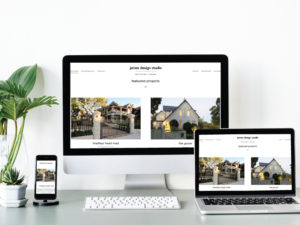A website that offers consistent user experience on every device, irrespective to screen resolution is what responsive web design is all about. Since past few years, responsive web designing has become an admirable trend that has overpowered other design styles in the web industry. Designers need to pay special heed to the compatibility issue, if a website which an online user visits is not optimized for his device than there are chances that he would take an exit from your site and never return back. Developing 100% responsive website can be an uphill struggle but you can try to incorporate key factors while designing a website and make it compatible with different devices. Responsive sites will be useful only if you make it useful. In attempt to go with the flow, designers may fall prey to common mistakes that may hamper the user experience on smaller devices.
Here are some guidelines to follow while designing a responsive website which will ensure you with better user experience:
Sketch a rough design or create prototype:
One thing which you need to bring in responsive design process is sketching. You can prepare a rough sketch of design for different screen sizes and different devices. These sketches will give an idea of how to design the websites. On the other hand, prototype will help you in planning the functionality for different devices. Prototypes will assist in defining the structure of content, navigation, where to set the breakpoints etc. This step will make the work process more flexible.
Start designing for smaller screens first:
You have hands on experience in designing website for desktops thus you must be well-versed in this section but website for mobile phones in new on the block and you may tend to make mistakes. It is advisable to pay attention to smaller screens first and then move to desktops. You can focus on mobile screen limitations and dedicate enough time is designing. First preparing mobile designs and then optimizing for desktops is much unproblematic than vice versa. Hence begin designing for mobile devices, don’t finish with it.
Refine the web content:
When visitors explore your website, what they look for first, where do they end their journey, on which web page do they spend much time, all this is indispensable to examine before you go for responsive web designs. In case of desktop layout, it is possible to flaunt everything on the home page but with small screens you may have to fight hard to win. Putting everything which is available on desktop layout on mobile phones can hamper the user experience badly therefore refine your content for mobile designs. The best alternative is to start with smaller screens rather than adjusting it later. Remember do not hide the content just because it should fit the small screen.
Keep the design fluid:
Fixed design layouts are not apt for responsive web designs. Therefore you need to keep the design, fluid. The design should be flowing between the breakpoints too. Though fixed layouts are easy to code and grasp, it can break easily in responsive web designs.
Do not forget about the touch:
The action of fingers on mouse or keyboard and fingers on screen is completely opposite and surprisingly most of the designers fail to notice that. Navigation and clickable links should be easily visible and big enough to press and perform action. If it can’t be large, zoom in zoom out option should be certainly made available. The virtual keyboard on mobile screens should work effectively. Unlike desktop layouts, some of the buttons on touch screens should be clickable and should redirect, for example, contact numbers should directly take the call action or send mail button should open the mail page for composing and sending mail.
This design fad doesn’t seem to fade anytime sooner as multitude devices will be springing up in the market, constantly. Thus responsive web design is an ultimate solution for multiple screen resolutions.



